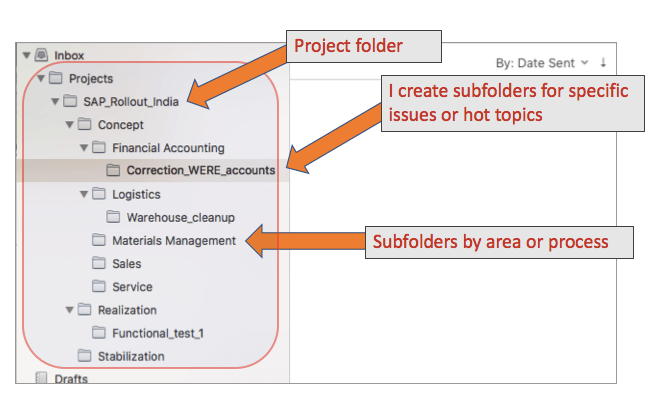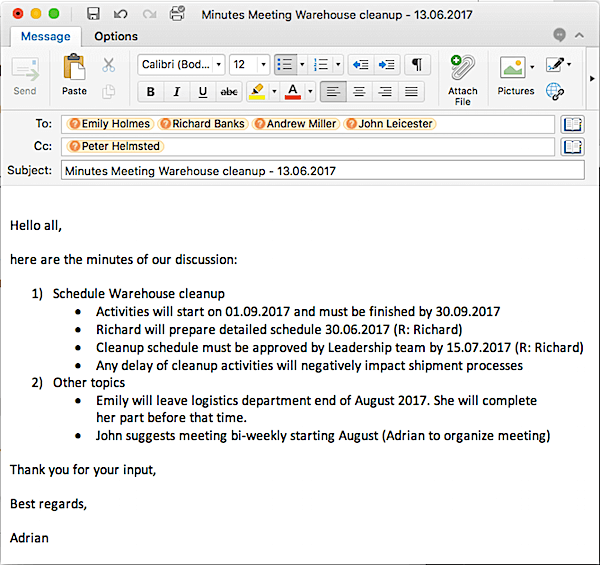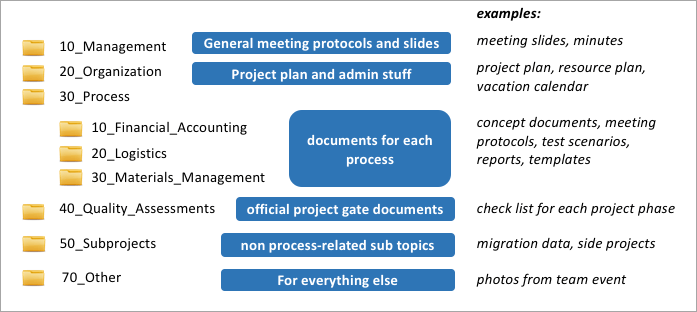With the right systems in place, you don’t have to worry that something important gets forgotten. Here I show you the systems I use to stay on top of things.
There are 4 parts that we’ll be looking at:
Tasks: Only what gets managed will get done
These are the individual activities that have to be done. I record EVERYTHING here, whether it’s administrative stuff like organizing a conference room or project-related deliverables.
This can be:
- a project deliverable – example: upload customer data
- communication need – if you have to inform someone
- status checks – example: check if all concept documents have a signature
Everything is stored in an Excel file for an easy overview. Tasks can be filtered by area or process, so I can see instantly what tasks are pending from a specific department.
On top of the Excel task list, I use a simple paper sheet to track the most urgent tasks. This is because I don’t like going into the electronic file every time. You have to open the drive, click, wait for it to open — these are too many steps to follow every time.
Excel task list:

CLICK HERE TO DOWNLOAD MY TASK LIST TEMPLATE
Emails: Finding the needle in the haystack
The key is to filter out emails that really matter from the other 999 mails that don’t.
What you need is a system which makes it easy to find any mail you are looking for, without searching for hours.
My system is a deep folder structure which evolves along with the project. I manually sort any important email into the right folder. This takes a little more time upfront but saves you hours in the long run.
This is how my typical Outlook structure looks like:

The folder structure I use is something like
Projects > project name > project phase > process (or business function)
This makes it very easy to find a particular email. Take for example a situation where you’re having a dispute with the customer. According to the customer his feedback was not considered for the product.
You can go back to the mail from the concept phase and show him what was discussed or agreed back then. “Look, this is the information you provided. And this is what we did.”
Project documents: The backbone of your project
When there are many people working in your project, you need a good structure for storing documents.
Otherwise people will spend a lot of time searching, and eventually people will create their own systems, which is definitely not what you want.
Meeting protocols: Record and follow up on decisions
Everybody has his own style when it comes to running meetings.
Personally, I prefer to write the minutes during the meeting, with everybody watching on the beamer what I write. Once the meeting is finished, all I have to do is press the send button in Outlook.
No guessing what has been discussed. No confusions and misunderstandings because we are all on the same page, literally.
Here is how my minutes usually look:

Whatever has been agreed in terms of next action steps must be added into the task list (from above).
Tip: To make it even easier to find this email later, I usually send a copy to myself for storing in a suitable Outlook folder. In this example I would store it under something like Projects > Project Name > Logistics > Warehouse cleanup.
My question: What systems do you use in your work to stay on top of things?
— Adrian

Author
-
Hi, I’m Adrian, a Senior Project Manager and the Creator of Tactical Project Manager, where I teach a pragmatic approach to project management. Led large-scale IT and business projects for over 10 years. My goal is to enable you to lead any project with confidence.
View all posts




